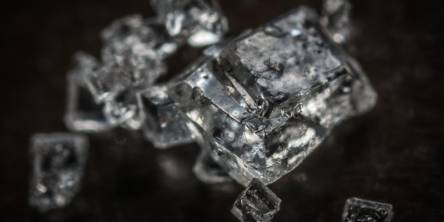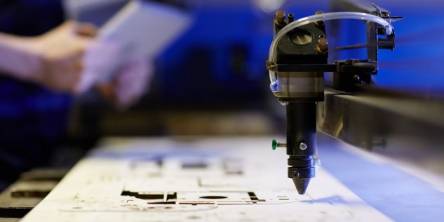Detailed Information about Dopants in Silicon Wafers
Doping/Impurity:
Silicon wafers are usually not as pure as they are formed with a primary impurity doping concentration between 1013 and 1015 atoms per cm3 of arsenic, phosphorus, boron, or antimony. It is then added to the melted silicon and defines the wafer as either bulk p-type or n-type. However, in comparison with single-crystal silicon's atomic density of 5×1023 atoms per cm3, this still gives purity of 99.99%. The silicon wafers can also be formed with some interstitial oxygen concentration in which metallic contamination and Carbon are kept to a minimum transition. The transitions metals should be kept on low concentration level for manufacturing of electronic applications.
Semiconductor doping is the procedure that changes an intrinsic semiconductor to an extrinsic. During the doping process, impurity atoms are introduced to an intrinsic semiconductor. They are further mixed with the atoms of various elements used in semiconductors. These impurity atoms perform an operation as either acceptors or donors in the intrinsic semiconductor by changing the hole and electron concentrations of the semiconductor. Impurity atoms are classified as donor or acceptor atoms based on the consequences they have on the intrinsic semiconductor.
Two main types of Semiconductor Conductivity:
An intrinsic semiconductor, also known as i-type semiconductor or undoped semiconductor, is a pure semiconductor without any essential dopant species present. The number of charge carriers can be achieved by the properties of the material itself instead of the number of impurities. The number of excited electrons and the number of holes are equal in intrinsic semiconductors.
The semiconductors which are doped into a doping agent and attain different electrical properties than the intrinsic semiconductor are called as extrinsic semiconductors. An n-type or negative-type extrinsic silicon semiconductor is a semiconducting substance that is formed by doping silicon with an n-type element. A p-type or positive-type extrinsic silicon semiconductor is a semiconducting material that is formed by doping silicon with a p-type element, such as Gallium, Aluminium and Boron.
Band structure of a p-type semiconductor:
In-band structure of P-type semiconductor, light circles in the valence band are holes and the dark circles in the conduction band are electrons. As compared to n-type, p-type semiconductors have a better hole concentration than electron concentration. 'P-type' refers to the positive charge of the holes.
In p-type semiconductors, electrons are the minority carriers and holes are the majority carriers. These semiconductors are created by doping an intrinsic semiconductor with acceptor impurities. In P-type semiconductors the Fermi energy levels are very low as compared to the extrinsic Fermi energy level.
Band structure of an n-type semiconductor:
Light circles in the valence band are holes and dark circles in the conduction band are electrons. Extrinsic semiconductors having better electron concentration than hole concentration are called as n-type semiconductors.
‘N-type’ means the negative charge of the electron. In these semiconductors, holes are the minority carriers and electrons are the majority carriers. They are created by doping an intrinsic semiconductor with donor impurities. The Fermi energy level is larger than that of the intrinsic semiconductor and lies nearer to the conduction band than the valence band.
Uses of extrinsic semiconductors:
They are used in making significant components of many common electrical devices. Many silicon wafer suppliers make these wafers using extrinsic semiconductors for Integrated circuits. A semiconductor diode consists of n-type and p-type semiconductors located in junction with each other. At present, semiconductor diode uses doped germanium or silicon. Extrinsic semiconductors are also used in the manufacturing process of transistors.
The two main types of transistors are:
- BJTs (Bipolar junction transistors) are the type of transistors made by using extrinsic semiconductors. The most common BJTs are PNP and NPN type. NPN transistors have two major layers of n-type semiconductors which sandwiches a p-type semiconductor. In PNP transistors there are two major layers of p-type semiconductors sandwiching an n-type semiconductor.
- FETs (Field-effect transistors) are the type of transistors also manufactured using extrinsic semiconductors. They are unipolar and considered either P-channel or N-channel. FETs are divided into two families, JFET (junction gate FET) and IGFET (insulated gate FET).
Similar Articles
When you see a steel ship in the harbor, the first impression is usually sheer scale.
Explore CNC turning—its components, process, benefits, applications, and future trends shaping modern precision manufacturing in various industries.
In the competitive industry of car manufacturing, attaining exceptional performance along with an innovative design needs the incorporation of modern manufacturing technologies
Facing delays, quality issues, or supply chain problems in hardware manufacturing? Learn the top 7 challenges—and practical fixes—to streamline production.
In the rapidly advancing landscape of high-tech manufacturing, electronics, and materials science, diamonds are no longer just gemstones they’re high-performance materials redefining what’s possible in technology.
A business in the manufacturing industry today has to ensure that it chooses the precision-engineered components suppliers keenly since the competition is very stiff
Selective Laser Sintering, or SLS, has established itself as one of the most reliable and widely used 3D printing technologies. This method is valued for its ability to produce complex, durable, and high-quality parts without the constraints of traditional manufacturing.
In the retail and display industry, the visual appeal of products is paramount. Customers are constantly drawn to displays that are not only eye-catching but also provide an immersive experience.
As previously established, CO2 laser technology operates by shining a high-power infrared beam on a mixture of gas that contains carbon dioxide, nitrogen, and helium. This technology is well known for the fact that it is able to engrave onto a variety of materials such as wood, glass, plastic, leather, and even some metals with high precision and without contact.









